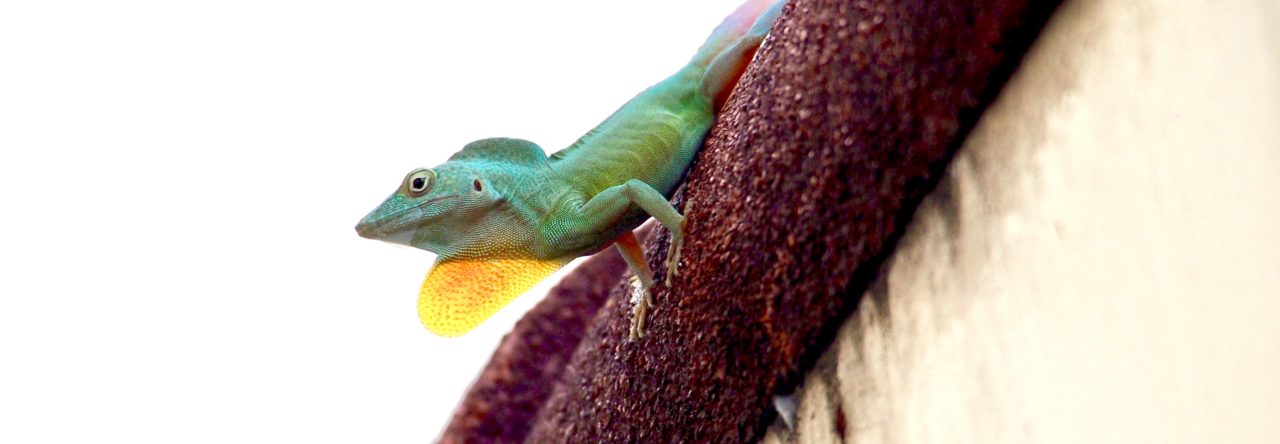Anole Annals contributor Martha Muñoz of Harvard University won the second annual Raymond B. Huey Award for her presentation discussing the role of behavior in the evolution of Anolis cybotes. The Huey Award, sponsored by the Division of Ecology and Evolution of the Society of Integrative and Comparative Biology, is given for the Best Student Presentation in the division.
Behavior is thought to play two contrasting roles during evolutionary diversification. First, behavior can expose individuals to novel environments, thereby driving physiological and morphological change. Second, behavior can be used to compensate for environmental differences, thereby impeding organismal change. In her talk, Martha described how she tested these two contradictory hypotheses in a clade of trunk-ground anoles that span a wide environmental range.

The Anolis cybotes species complex occurs in Hispaniola from sea level up to 2,500 meters in elevation. By comparing two populations of a lowland generalist, A. c. cybotes, to two independently derived high-altitude specialists, A. c. armouri and A. c. shrevei, Martha was able to detect signatures of adaptation to high elevation. First, Martha asked whether physiological evolution had occurred. She found that body temperatures in the field were not significantly different at high and low elevations, despite the fact that lizards experience air temperatures 15 degrees cooler, on average, at high elevation. In addition, there were no significant differences in preferred body temperature (measured in the lab) among the four populations, and in each case the preferred body temperature matched the field body temperature. These results clearly support a lack of change in the thermal physiology of these lizards despite occupying very different thermal environments.
Martha then tested whether behavioral inhibition was the cause of the observed stasis in thermal physiology. By recording the perch sites of lizards in the field, Martha found that low-elevation lizards perch primarily on trees while high-elevation lizards have shifted to perching primarily on rocks. To quantify how this perch shift affects a lizard’s thermal environment, Martha deployed a series of copper lizard models at each site. The copper models closely mimic the thermal properties of a live lizard, so the temperatures recorded by the models are essentially those experienced by a non-thermoregulating lizard (i.e., the operative temperature). By placing the copper models on both rocks and trees at each site, she was able to assess the thermal properties of each perch type. Martha found that at low elevation, models on both trees and rocks achieved temperatures in the lizards’ preferred temperature range, and sometimes models on rocks got dangerously hot. At high elevation, however, only models placed on rocks achieved temperatures in the preferred range, while models on trees remained too cool. These results support the hypothesis that behavioral inhibition (perch switching) is preventing evolution in thermal physiology.
In a final twist, Martha asked whether evolutionary stasis is also observed in morphology. Morphology is known to correlate with microhabitat in Anolis lizards and is rapidly evolvable, and so stasis would be a surprising result. Martha found the high-elevation populations have significantly flatter and wider heads, a common feature of rock-dwelling lizards, compared to low-elevation populations. She found no differences in limb length or lamellae number. Martha hypothesized that for head morphology, perch switching was a form of behavioral drive that promoted evolutionary change.
Martha concluded by emphasizing that niches are multidimensional, and, therefore, evolution can occur along multiple niche axes simultaneously. By examining adaptation to both the thermal niche (body temperature) and structural niche (morphology) in this study, she revealed that behavioral drive and behavioral inhibition—previously thought to be incompatible—can in fact occur simultaneously in the same organism.
Congratulations, Martha, on your award-winning talk!










